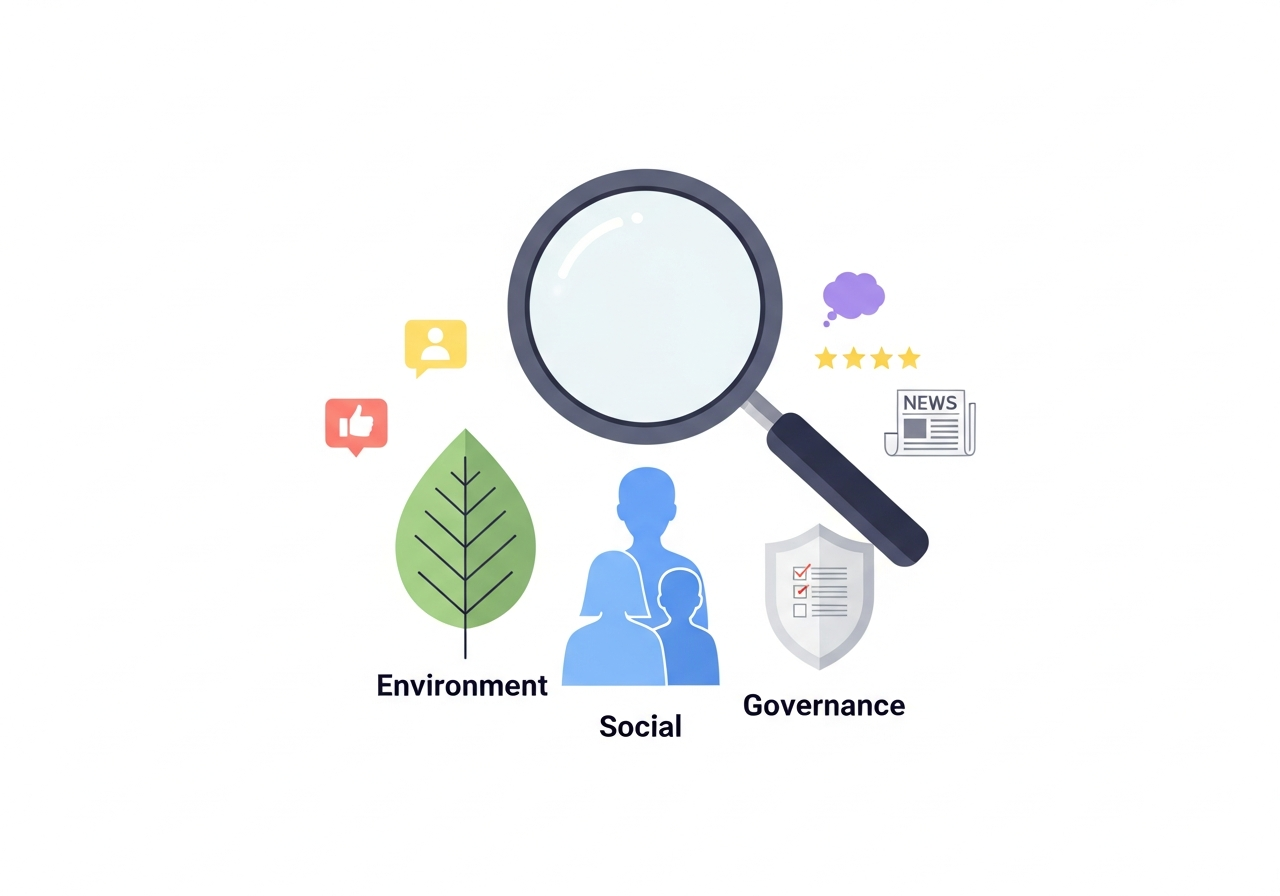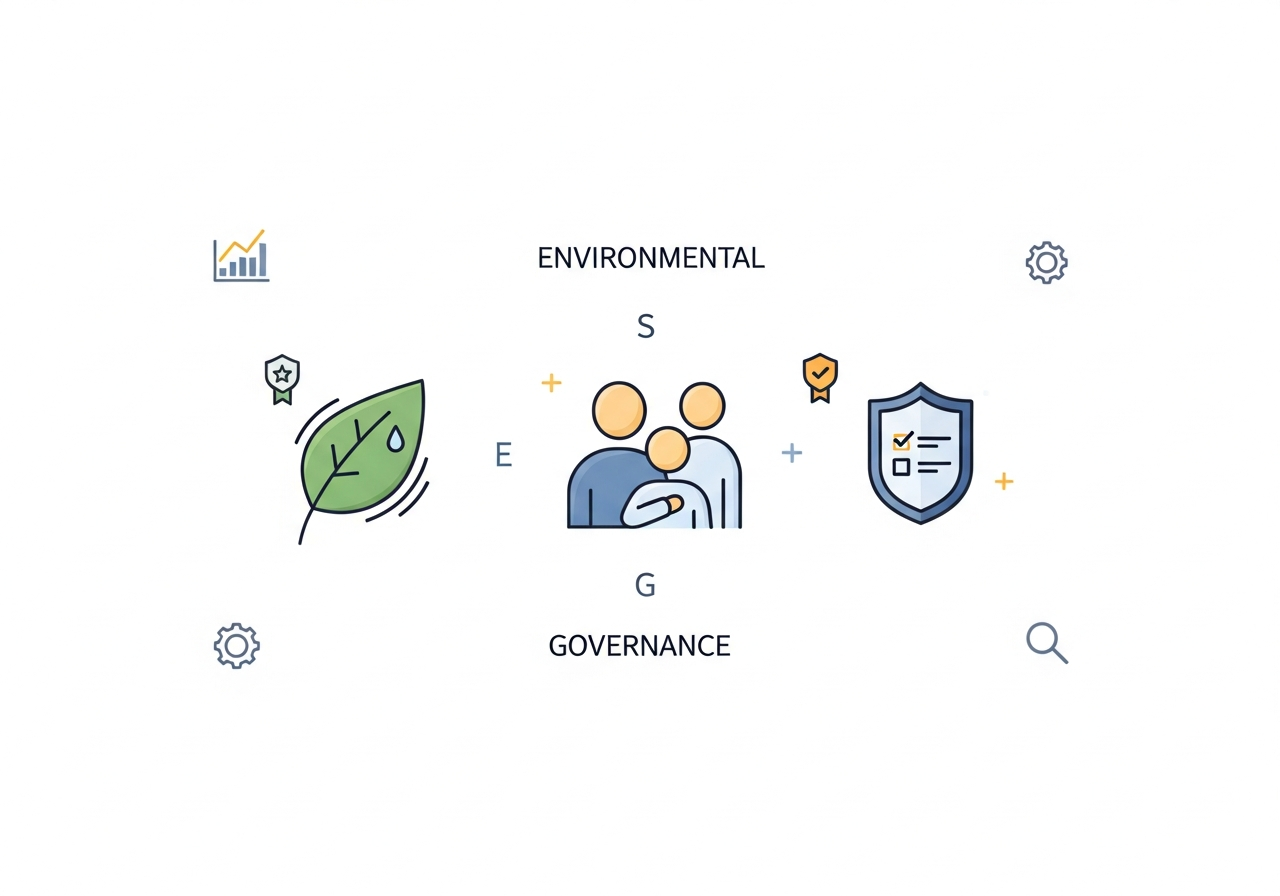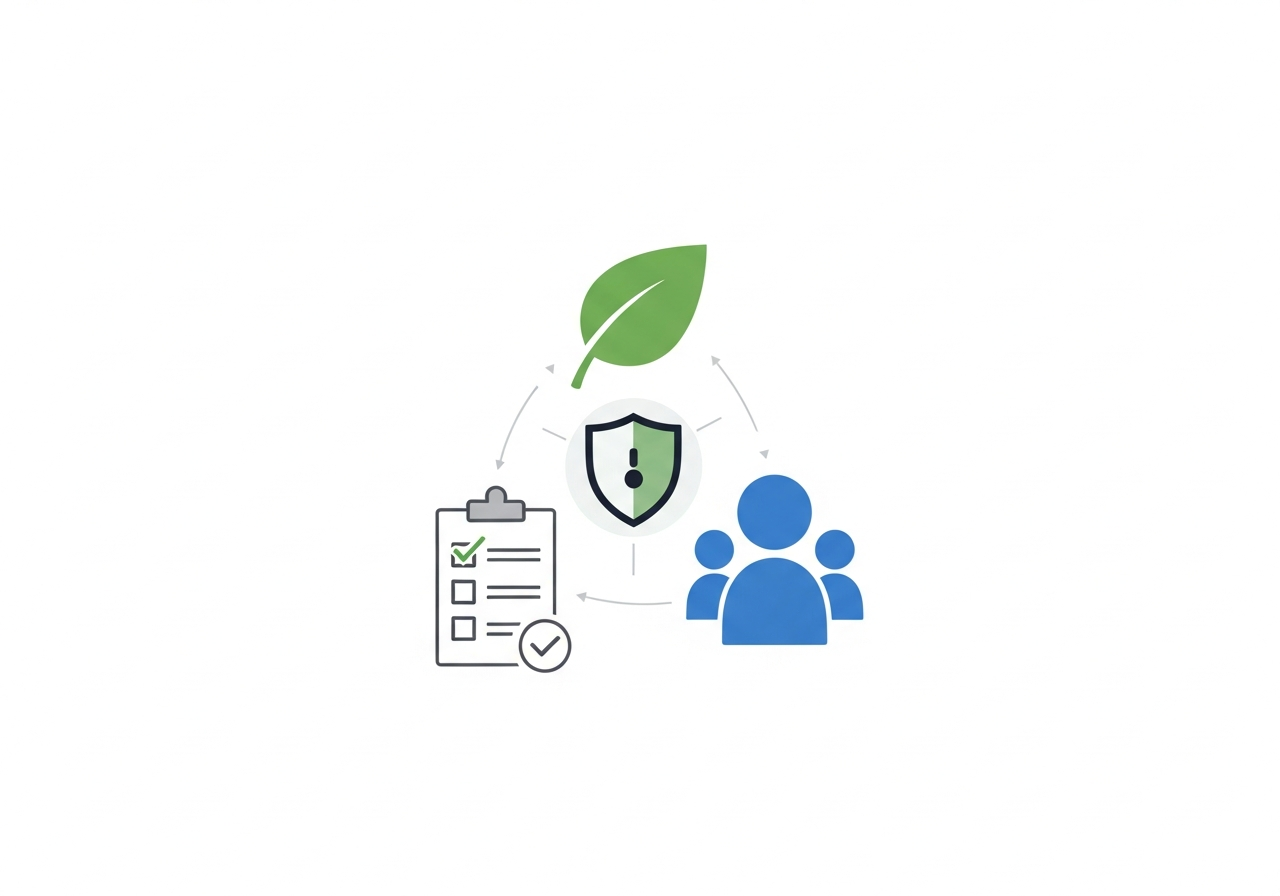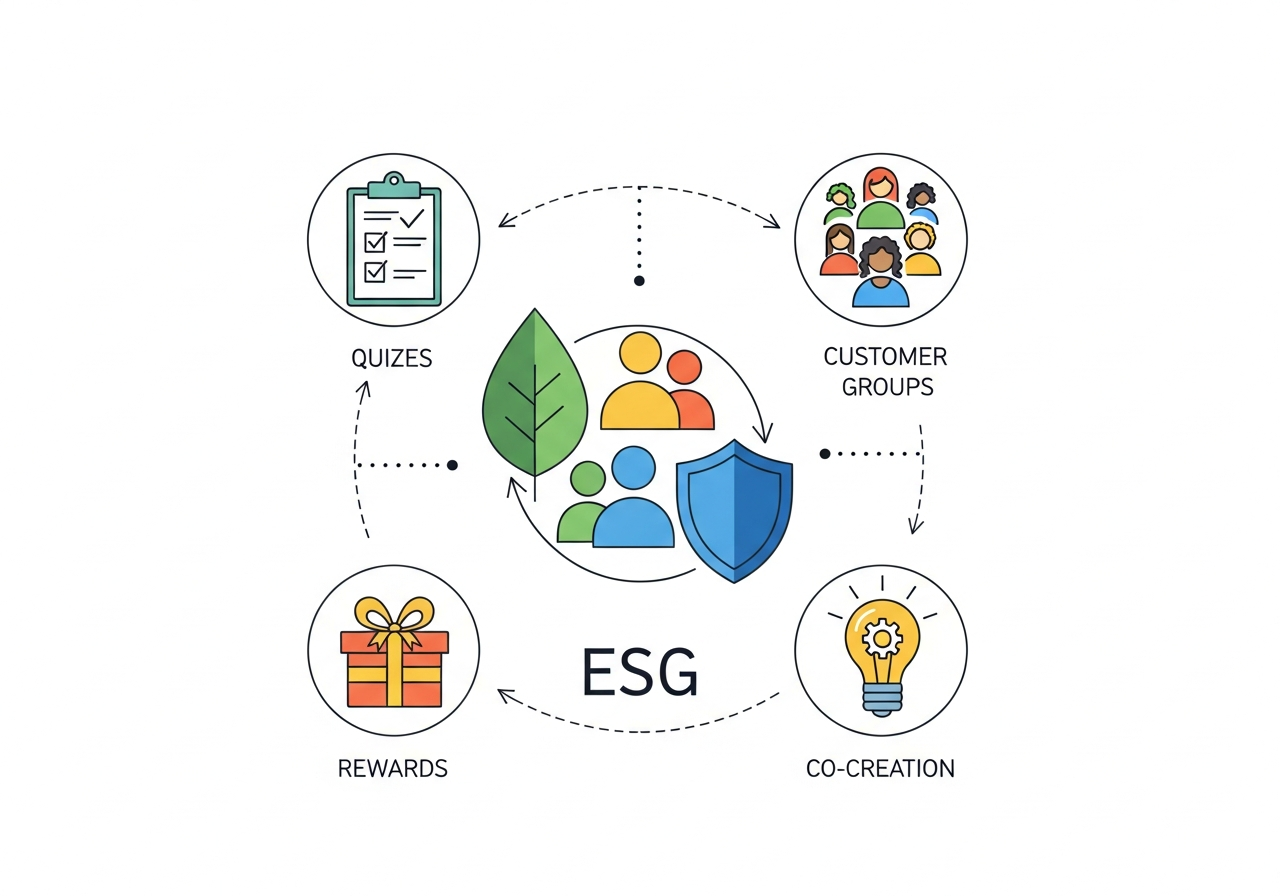Integrating ESG principles into online reputation management strengthens brand credibility, trust, and stakeholder engagement. By auditing initiatives, creating ESG-focused content, monitoring perception, responding transparently, and leveraging data and customer advocacy, brands build a sustainable, values-driven digital reputation.
In today’s digital landscape, consumers and stakeholders expect more than just quality products or services. They demand transparency, ethical conduct, and sustainable practices. Environmental, Social, and Governance (ESG) criteria have emerged as a powerful driver of brand perception online. Integrating ESG into your Online Reputation Management (ORM) strategy not only enhances credibility but also attracts purpose-driven customers. In this guide, we explore how sustainable ORM anchored in ESG principles can elevate your brand’s digital image, foster lasting trust, and differentiate you in a crowded marketplace.
Understanding Sustainable Reputation in the Digital Age
Sustainable reputation goes beyond crisis response and review management. It embodies a brand’s commitment to environmental stewardship, social responsibility, and sound governance. When communicated effectively, ESG initiatives become a cornerstone of your online narrative, shaping how audiences perceive your values and long-term vision.
Key facets of sustainable reputation include:
- Environmental Responsibility: Carbon footprint reduction, renewable energy use, waste management best practices.
- Social Impact: Community engagement, diversity & inclusion policies, fair labor practices.
- Governance & Ethics: Transparent reporting, anti-corruption measures, data privacy protections.
Integrating ESG into Your ORM Strategy

To harness the full power of ESG in reputation management, weave your sustainability efforts into every stage of the ORM lifecycle. Here’s how:
1. Audit and Benchmark Your ESG Footprint
Start with a comprehensive audit of your current ESG initiatives and their online visibility. Identify existing web pages, blog posts, social media mentions, and review sites that highlight your sustainability work. Benchmark your performance against industry leaders to spot gaps and opportunities.
2. Create ESG-Focused Content Themes
Develop a content calendar that centers on ESG milestones, case studies, and thought leadership. Examples include:
- Annual sustainability reports with interactive infographics.
- Video interviews with your CSR team or community partners.
- Blog series on reducing supply chain emissions or improving worker welfare.
3. Align Keywords with ESG Search Intent
Incorporate keywords that reflect both reputation management and ESG topics. For instance:
- “sustainable brand management”“corporate social responsibility SEO”“ESG reputation monitoring”“ethical supply chain transparency”
Monitoring ESG-Related Brand Perception

Real-time monitoring is critical for detecting emerging concerns or amplifying positive feedback around your ESG efforts. Key tactics include:
- Social Listening: Track mentions of your sustainability programs, green certifications, or philanthropic partnerships across platforms.
- Review Analysis: Use sentiment analysis to gauge customer reactions to eco-friendly features or ethical initiatives.
- Media Monitoring: Stay ahead of news coverage or influencer commentary on your environmental or social practices.
Proactive Response to ESG Feedback
Positive and negative ESG feedback deserves swift, transparent engagement. Best practices include:
- Acknowledge Concerns: If a community raises issues about waste disposal or labor treatment, respond with your action plan and timeline.
- Share Success Stories: Highlight measurable improvements, such as % reduction in emissions or number of beneficiaries of your CSR programs.
- Foster Dialogue: Invite stakeholders to webinars or Q&A sessions on your ESG roadmap, reinforcing transparency.
Tools and Best Practices for Sustainable ORM

Modern ORM platforms now integrate ESG metrics alongside traditional reputation signals. Consider these tools and tactics:
- Holistic Monitoring Dashboards: Platforms like Brandwatch or Sprout Social can be customized to flag ESG keywords and sentiment shifts.
- Automated Reporting: Schedule monthly ESG reputation reports that combine media coverage, social mentions, and review analytics.
- Cross-Functional Collaboration: Align your PR, CSR, and SEO teams to ensure consistent messaging and rapid response across all channels.
- Third-Party Certifications: Promote recognized seals or ratings (e.g., B Corp, CDP) to reinforce authenticity and trustworthiness online.
Pro tip: Incorporate user-generated content from satisfied customers who champion your ESG commitments. Authentic testimonials can significantly amplify credibility.
Measuring Success and Iterating
Key performance indicators for sustainable ORM include:
- Share of Voice in ESG Conversations: Your brand’s percentage of mentions relative to competitors in sustainability dialogues.
- Sentiment Improvement Over Time: Track positive vs. negative ESG-related mentions quarterly.
- Engagement Rates on ESG Content: Click-throughs, time on page, and social shares for sustainability articles or videos.
- Reputation Score Metrics: Use proprietary scores from ORM platforms to monitor overall brand health and ESG impact.
Regularly review these KPIs and refine your content themes, outreach tactics, and monitoring configurations to stay aligned with evolving stakeholder expectations.
Communicating ESG Achievements Through Multi-Channel Storytelling

Effectively communicating ESG progress is just as important as implementing the initiatives themselves. Modern audiences expect brands to show—not just tell—their commitment to sustainability. Multi-channel storytelling helps amplify your ESG wins, ensuring they reach the right stakeholders across the digital ecosystem. By tailoring messages for each platform, you can boost engagement, humanize your initiatives, and strengthen your reputation as a transparent, ethical brand.
Key Channels for ESG Storytelling:
- Website: Create a dedicated sustainability hub with reports, updates, and success stories.
- Social Media: Use short-form videos, infographics, and behind-the-scenes posts to highlight ongoing efforts.
- Email Campaigns: Send quarterly ESG updates or “impact spotlights.”
- Press Releases & Media Kits: Share major milestones such as certifications or sustainability awards.
- Podcasts & Webinars: Host interviews with your leadership, CSR teams, or community partners.
Pro Tip: Use consistent visuals, logos, and messaging across channels to reinforce trust and recognition.
Building Internal ESG Advocacy Teams
Sustainable reputation starts from within. Employees are often a brand’s most credible ambassadors—especially when it comes to ESG initiatives. By empowering internal teams, you’re not only strengthening your sustainability culture but also amplifying your positive reputation externally. When staff genuinely support and understand your ESG values, their advocacy online feels authentic and resonant.
Why Internal Advocacy Matters
- Employees’ posts receive 5–8x more engagement than branded posts.
- Authentic staff testimonials boost trust and humanize your ESG commitment.
- Internal advocates help monitor emerging concerns and contribute ideas for improvement.
Steps to Build ESG Advocacy Internally
- ESG Training Workshops: Educate employees on sustainability goals and progress.
- Internal ESG Newsletter: Share achievements, upcoming initiatives, and volunteer opportunities.
- Recognition Programs: Reward teams who contribute significantly to environmental or social goals.
- Content Participation: Encourage employees to contribute stories, photos, or testimonials for official channels.
Table: Roles in an Internal ESG Advocacy Team
| Role | Primary Responsibility | Impact on ORM |
|---|---|---|
| ESG Coordinator | Oversees internal communication and alignment on sustainability goals | Ensures consistent messaging across teams |
| Employee Advocates | Share updates and support on social platforms | Humanizes and amplifies brand reputation |
| CSR Ambassador | Leads community or volunteer initiatives | Boosts positive social perception |
| Data & Reporting Lead | Compiles ESG metrics and progress updates | Strengthens transparency and trust |
Crisis Management Through an ESG Lens
Even the most sustainable brands face crises—product recalls, supply chain issues, data breaches, or negative publicity. What differentiates reputable brands is how they respond. Viewing crisis management through an ESG lens ensures that your actions demonstrate accountability, transparency, and long-term responsibility.

How ESG Shapes Crisis Response
- Environmental: Address ecological concerns with measurable commitments.
- Social: Prioritize people—customers, employees, and communities—in all responses.
- Governance: Provide clear reporting, timelines, and corrective actions.
Crisis Response Checklist (ESG-Aligned)
- Acknowledge the Issue Publicly: Avoid vague statements; offer clarity and ownership.
- Share Immediate Actions: Outline steps being taken to fix the situation.
- Provide Data: Offer transparent metrics, such as reduction goals or safety improvements.
- Engage Stakeholders: Host a briefing or livestream to address public questions.
- Publish a Follow-Up Report: Show post-crisis results, new policies, and accountability measures.
Example Scenario
If a company faces criticism for unethical labor practices in its supply chain, an ESG-aligned response would include:
- Publishing an audit report,
- Disclosing suppliers,
- Implementing third-party oversight,
- Providing restitution where appropriate,
- And sharing ongoing progress updates across digital channels.
This transparent, values-driven approach significantly boosts long-term trust and demonstrates an unwavering commitment to ethical operations.
Leveraging ESG Data for Strategic Decision-Making
Integrating ESG insights into your Online Reputation Management strategy isn’t just about reporting—it’s a powerful tool for making informed business decisions. By analyzing ESG-related data, brands can identify trends, measure impact, and adjust initiatives to align with stakeholder expectations. This proactive approach strengthens credibility, mitigates risks, and positions your brand as a forward-thinking leader in sustainability.
Ways to Leverage ESG Data
- Trend Analysis: Track mentions of sustainability topics or concerns in social media, reviews, and news outlets to anticipate reputation risks.
- Impact Measurement: Use metrics such as carbon reduction, community program reach, and diversity benchmarks to assess outcomes.
- Competitor Benchmarking: Compare ESG efforts and online perception against industry peers to identify gaps or opportunities.
- Stakeholder Insights: Gather feedback from customers, investors, and employees to refine initiatives and messaging.
Table: Key ESG Metrics for ORM Strategy
| ESG Dimension | Example Metric | Reputation Insight |
|---|---|---|
| Environmental | Carbon footprint reduction, renewable energy usage | Demonstrates environmental responsibility |
| Social | Diversity & inclusion ratio, community program beneficiaries | Shows commitment to societal impact |
| Governance | Compliance audits, transparency in reporting | Builds trust and mitigates reputational risk |
Pro Tip: Integrate ESG analytics into your existing ORM dashboards to get a comprehensive view of how sustainability efforts affect overall brand perception. Regularly review this data to inform content, campaigns, and crisis response strategies.
Engaging Customers Through ESG-Focused Experiences

Sustainable reputation is not just about communicating ESG initiatives—it’s about actively involving your audience in your brand’s sustainability journey. Engaging customers through ESG-focused experiences transforms passive observers into advocates, strengthens loyalty, and enhances your online reputation.
Strategies to Engage Customers
- Interactive Campaigns: Launch quizzes, polls, or challenges around sustainability topics to educate and involve your audience.
- Customer Participation Programs: Invite customers to participate in tree-planting events, recycling drives, or community service projects.
- Co-Creation Opportunities: Allow customers to contribute ideas for eco-friendly products or services, fostering a sense of ownership.
- Gamification & Rewards: Use points, badges, or recognition for sustainable behaviors like recycling, eco-purchases, or sharing ESG content online.
Benefits of Customer ESG Engagement
- Boosts brand advocacy and word-of-mouth promotion.
- Creates authentic user-generated content showcasing your ESG commitments.
- Strengthens trust by demonstrating that your ESG values extend beyond marketing.
- Provides valuable feedback for refining sustainability strategies.
Table: Customer Engagement Tactics vs. Benefits
| Engagement Tactic | Description | Impact on Reputation |
|---|---|---|
| Interactive Campaigns | Quizzes, polls, and challenges | Increases awareness and online engagement |
| Participation Programs | Community or environmental activities | Builds emotional connection and trust |
| Co-Creation Initiatives | Customer suggestions for ESG improvements | Encourages advocacy and innovation |
| Gamification & Rewards | Points, badges, recognition for eco-actions | Drives repeat engagement and loyalty |
Pro Tip: Highlight these initiatives in your digital channels—social media, newsletters, and your website—to showcase your brand as inclusive, transparent, and values-driven.
Conclusion
Incorporating ESG principles into your online reputation management strategy is no longer optional—it’s essential for brands aiming to build trust, differentiate in their industry, and foster long-term loyalty. By auditing your current footprint, crafting targeted ESG narratives, monitoring perception in real time, and responding transparently, you can create a resilient, sustainable reputation that resonates with today’s values-driven audience.
Start today by identifying one high-impact ESG story you can share across your website and social channels. Over time, these authentic stories will compound, transforming your brand into a beacon of sustainability and trust in the digital realm.
Frequently Asked Questions (FAQ)
1. What is ESG, and why does it matter for online reputation?
ESG stands for Environmental, Social, and Governance. Integrating ESG into your ORM strategy demonstrates your commitment to sustainability, ethical practices, and transparency—factors that build trust and differentiate your brand online.
2. How can ESG improve my brand’s credibility?
By showcasing measurable actions in environmental stewardship, social responsibility, and governance, your brand signals accountability and authenticity, which enhances stakeholder trust and mitigates potential reputational risks.
3. What types of ESG content should I create?
- Sustainability reports with infographics
- Video interviews with CSR teams or community partners
- Blog posts on ethical supply chain practices
- Social media updates highlighting milestones or awards
4. How do I monitor ESG-related brand perception?
Use tools such as social listening platforms, review analysis, and media monitoring to track mentions of ESG initiatives, gauge sentiment, and detect potential risks in real time.
5. How should I respond to ESG feedback online?
- Acknowledge concerns transparently and promptly
- Share measurable improvements or success stories
- Foster dialogue through webinars, Q&A sessions, or social media engagement
6. Which metrics are most important for ESG-focused ORM?
- Share of voice in ESG conversations
- Sentiment trends over time
- Engagement rates on ESG content
- Reputation scores integrating ESG impact
7. Can internal teams help strengthen ESG reputation?
Yes. Employee advocacy, internal ESG training, and recognition programs amplify credibility. Staff can serve as authentic brand ambassadors by sharing stories and supporting sustainability initiatives online.
8. How can customer engagement enhance ESG reputation?
Interactive campaigns, participation programs, co-creation opportunities, and gamified experiences encourage customers to participate in ESG initiatives, generating user-generated content and increasing trust.
9. What role does crisis management play in ESG ORM?
ESG-aligned crisis management demonstrates accountability and transparency during challenges. Addressing environmental, social, or governance issues openly and with clear corrective actions strengthens long-term trust.
10. How can ESG data inform decision-making?
Tracking metrics like carbon footprint, diversity ratios, and stakeholder sentiment helps brands identify trends, refine strategies, and communicate impact effectively, ensuring continuous improvement in sustainability and reputation.
Learn more about: Guarding Your Brand Against Deepfakes and AI Misinformation





